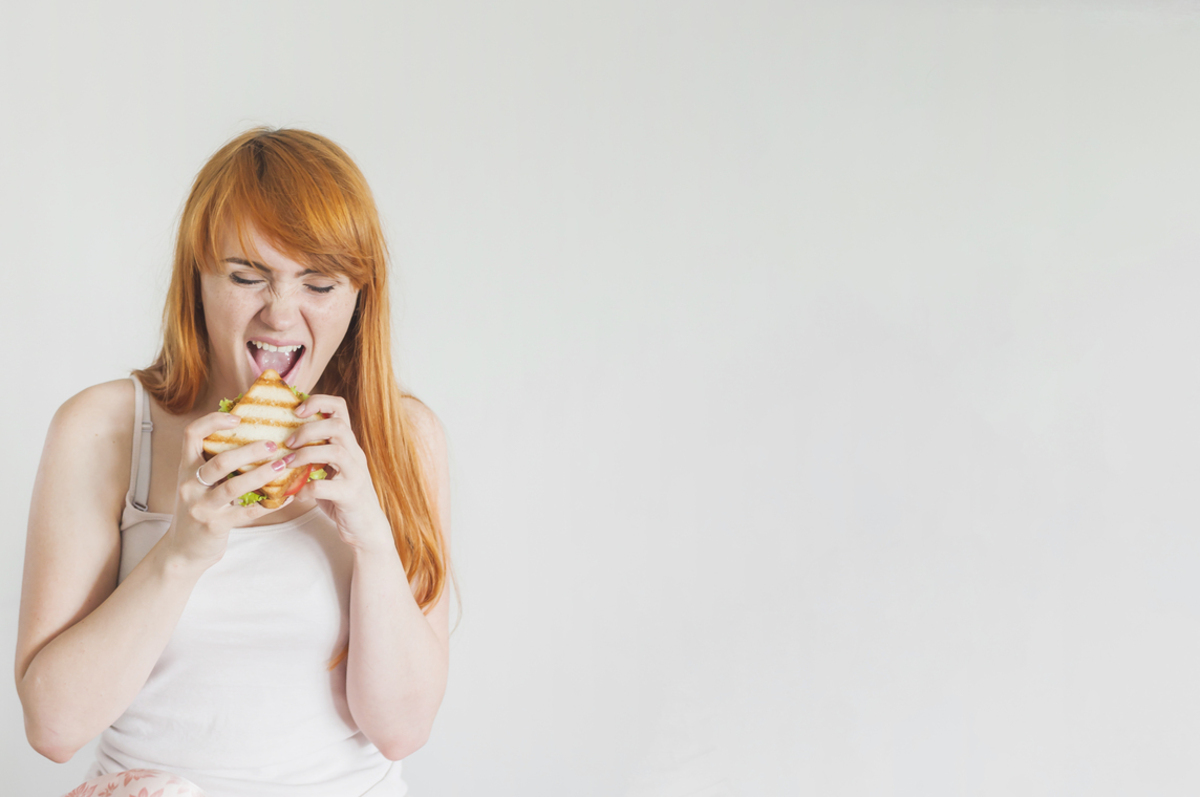Polyphagia, also known as hyperphagia, is a condition in which patients experience excessive hunger and a higher than normal appetite.
Everybody can feel polyphagia or excessive hunger at some point, such as after strenuous exercise or other excessive physical activity. However, patients with polyphagia will feel hungry at all time, even after they have just eaten food. Patients may also find that they are craving specific foods and the thought of the food is all they can think about. The exact definition of polyphagia is excessive hunger and high intake of food.

Often times, polyphagia can signal an underlying medical issue. In fact, it can be related to a wide array of diseases including:
- Depression
- Stress
- Low blood sugar levels, a condition known as hypoglycemia
- High blood sugar levels, a condition known as hyperglycemia
- Anxiety
- Bulimia, an eating disorder in which there are periods of binging or excessive overeating
- Binge eating disease
- Hyperthyroidism, a condition in which there are high levels of thyroid hormone (which sets your metabolic rate)
- Premenstrual syndrome (PMS)
- Certain psychiatric conditions
- Kleine-Levin Syndrome
- Prader-Willi Syndrome
- Marijuana use
- Use of specific prescription drugs that include corticosteroids
- Diabetes
Diabetes and polyphagia
Diabetes is a disease in which patients have high levels of sugar in their blood. The three main symptoms associated with diabetes are:
- Polyphagia
- Polydipsia (high levels of thirst)
- Polyuria (frequent urination)
While a small amount of glucose is always in your bloodstream, in patients with diabetes, cells are unable to access this glucose. Thus, cells are deprived of a potential source of energy. This cell starvation leads to frequent hunger pangs.
How do doctors determine that your polyphagia is the result of diabetes?
If your doctor suspects that you have diabetes, then they will look for other symptoms that are indicative of diabetes, these include:
- Fatigue or tiredness
- Headaches or dizziness
- Blurry or impaired vision
- Reduced ability to concentration
- Hyperglycemia (high blood sugar levels)
- Wound and sores that heal slowly
- Weight loss
If the other symptoms also corroborate a diagnosis of diabetes, then your doctor will send you for other diagnostics test such as checking for high blood glucose (which is a test you will need to fast for). Another test that can tell you whether you have diabetes is the A1C.
Polyphagia and low blood glucose levels
Another reason why people may experience polyphagia is if they have low levels of blood glucose, generally below a measurement of 4 mmol/l. When that happens, your body will respond by releasing the stores of glucose that are in your liver in order bring your body glucose levels back to normal. While diabetes is characterized by high blood sugar levels, one of the side effects of diabetes medication such as insulin and sulfonylureas is developing hypoglycemia (low blood glucose levels). If you have diabetes and are experience low blood glucose, you should eat something sweet as soon as possible.
How do you treat polyphagia?
Unfortunately, just eating will not make you feel full or get rid of the hungry feeling. In fact, for patients with diabetes, this will actually make you feel worse as it will further increase your blood glucose levels. In order to treat polyphagia, it is recommended that you lower your blood glucose levels by exercising, as that helps increase production of insulin. If you still continue to feel hungry, you should contact your doctor and set up an appointment.
Generally, the best way to treat polyphagia is by treating the underlying disease. For example, if you have diabetes then treating diabetes can help treat polyphagia. However, there are some at-home things you can do to stop polyphagia. These include:
- When you eat food, making it more flavorful by adding herbs and spices. The richer a food is, the fuller you will feel.
- Eat your meal without any distractions. Don’t watch TV while you eat as it will be easy to overeat.
- Take your time when you eat and don’t just gulp your food.
- Drink lots of fluid before and after you have a meal, particularly water or a tea as those do not have any calories
- When you snack, find healthy snacks such as nuts, celery or low carbohydrate snacks
- Exercise to reduce your hunger
- When you start to eat, eat your salad first and then your main meal, which will allow your brain some time to realize that its full
- Eat foods at regular intervals instead of randomly throughout the day. The consistency is important for your body.
- American Diabetes Association. "Diagnosis and classification of diabetes mellitus." Diabetes care 37.Supplement 1 (2014): S81-S90.
- Guthrie, Richard A., and Diana W. Guthrie. "Pathophysiology of diabetes mellitus." Critical care nursing quarterly 27.2 (2004): 113-125.
- Abbas, Mohammed Talat, and Noor Hadi. "Review Diabetes Mellitus: A review." karbala journal of pharmaceutical sciences 15 (2018): 80-91.
- Photo courtesy of SteadyHealth
- Photo courtesy of SteadyHealth


Your thoughts on this